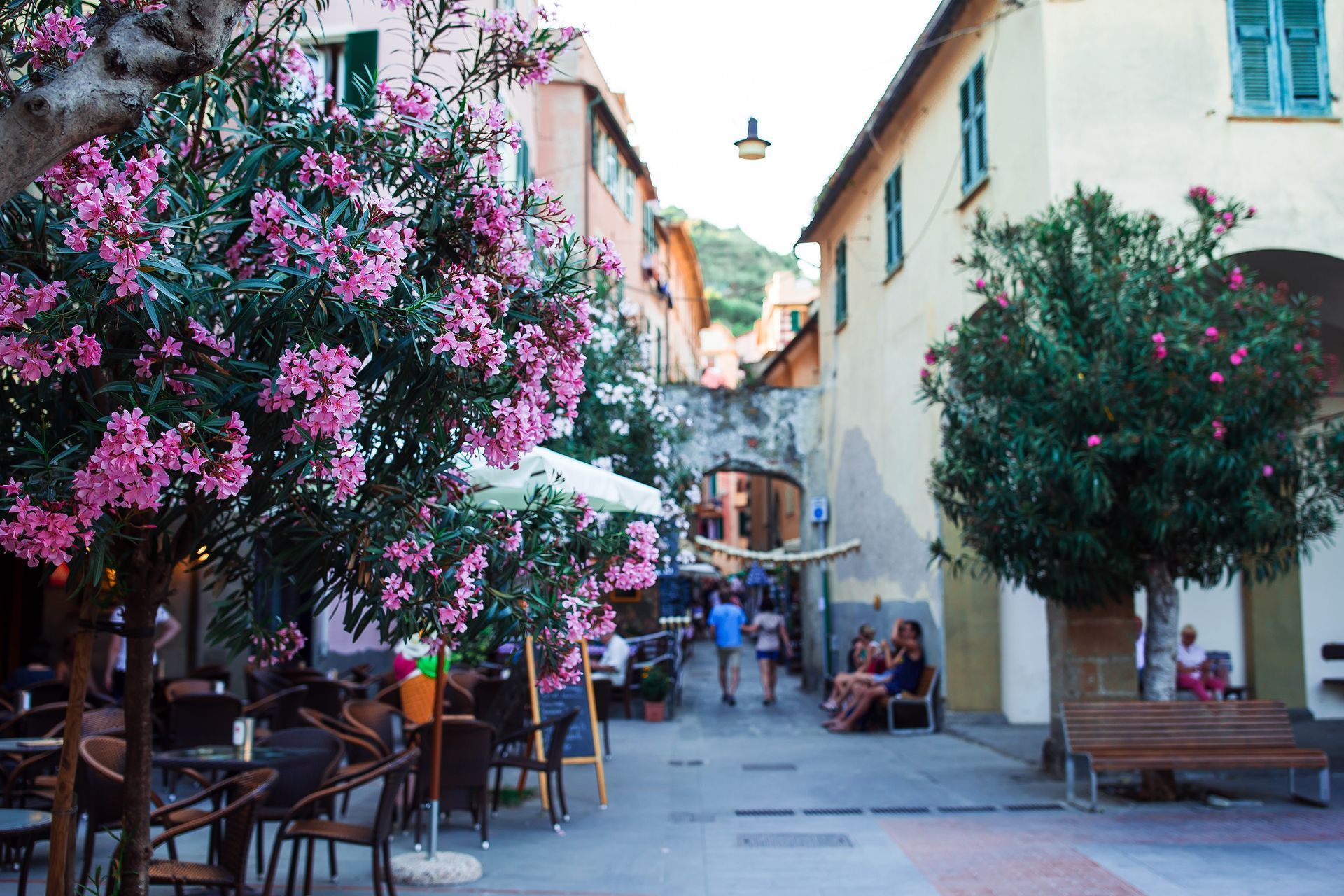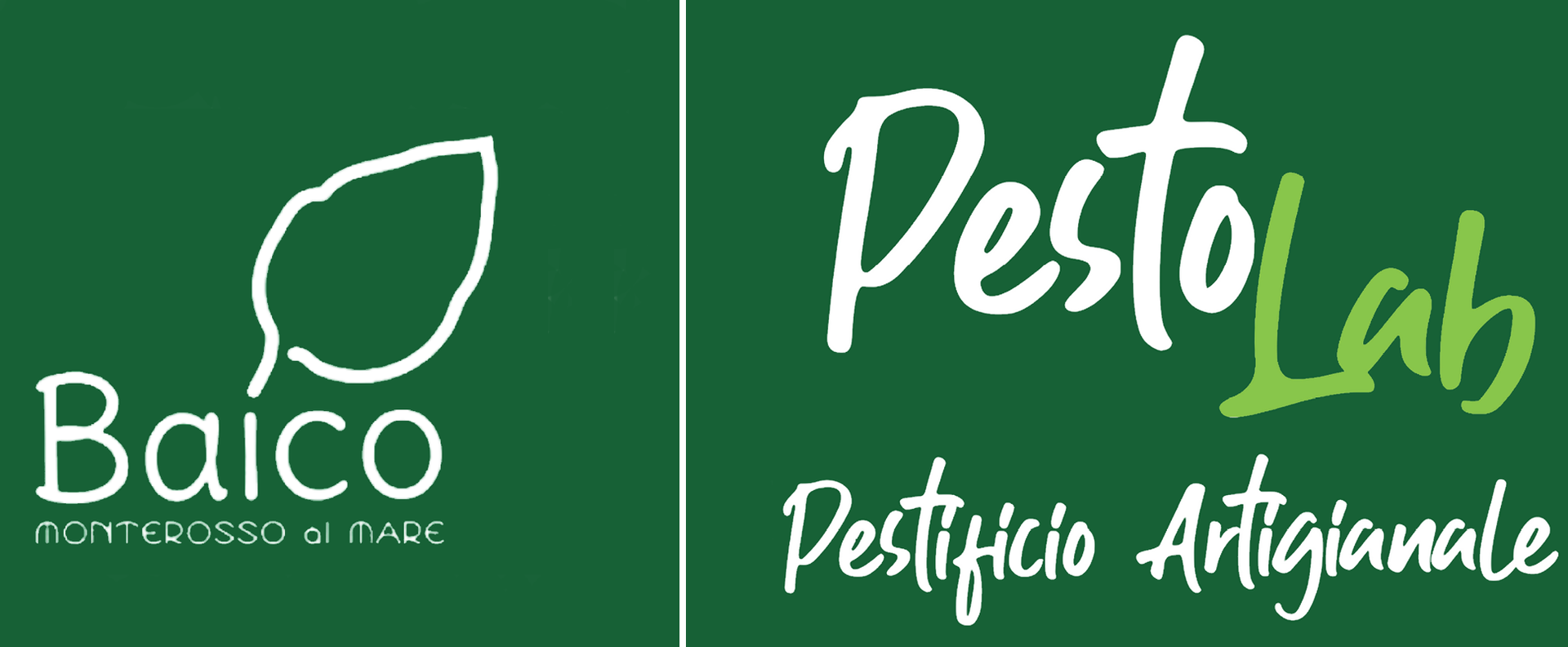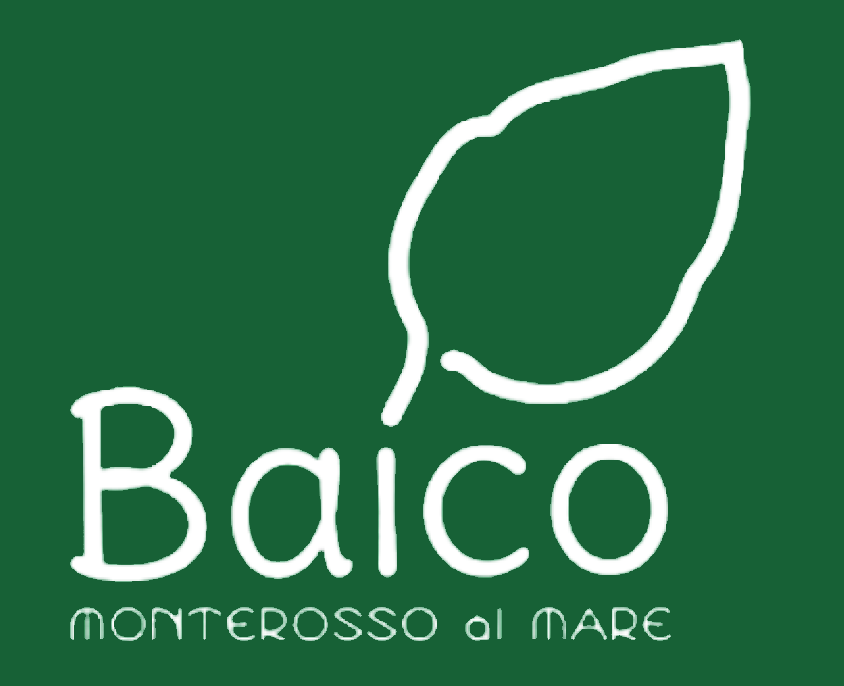Monterosso al Mare
5 Terre National Park
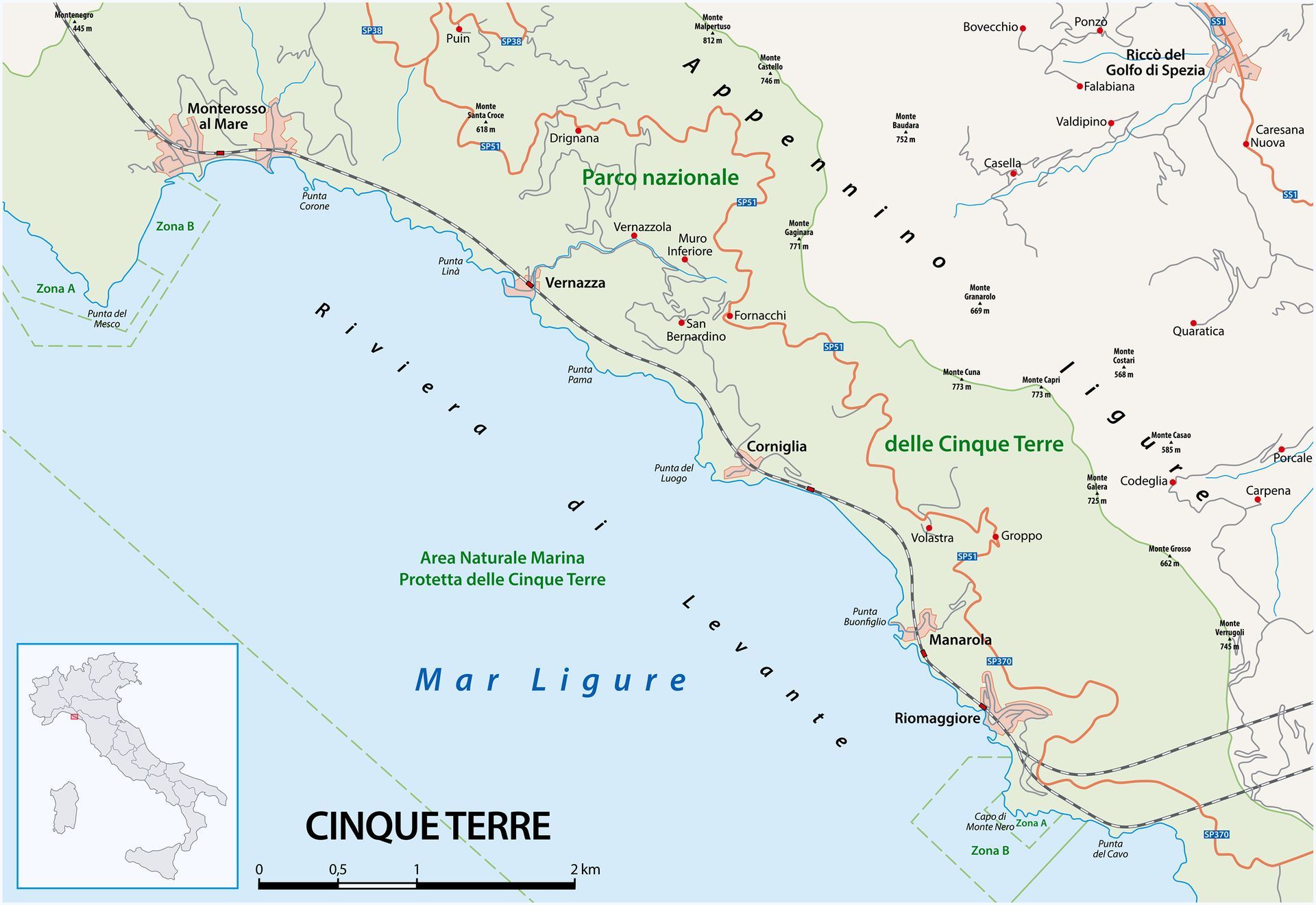
The old village
Of the Cinque Terre, Monterosso is the best known and the last of the five villages. It is about thirty kilometers from the city of La Spezia. The town overlooks a sort of gulf which is closed to the north by Punta Mesco and is surrounded by terraced ledges built alongside the hills which descend towards the sea.
A territory whose shape and structure have been profoundly modified over the centuries by several generations of inhabitants and today they have been transformed into a paradise where lemon and olive trees are grown and the famous vines that produce schiacchetrà, a fragrant white wine after dinner, renowned all over the world.
From the seafront you can enjoy a view of the beautiful Fegina beach which integrates perfectly into the new part of Monterosso.
From the beach, towards the eastern part of the medieval village, you will discover, along the coast, the entrance to the Sentiero Azzurro. It is a sort of enchanted panoramic terrace from which you can glimpse, in an irregular but harmonious succession, unforgettable glimpses of caves, coves, cliffs, small beaches and rocky cliffs that plunge into the crystalline sea.
At sunset looking from the village towards the horizon where the mountains and the sea become one, you will see, sometimes through veiled clouds, the red rays of the sun as they illuminate the mountains finding, behind them, a hiding place for the night. Some believe that the name Monterosso derives from this daily event, others believe that it derives from the color of the local rocks.
History
According to documents dating back to the year 1000, Punta Mesco was the home of the first inhabitants of the area, but it was only in the 11th century that the current village of Monterosso settled along the Burranco river. The founders were probably the legendary inhabitants of Albaretto, a village located in the surrounding mountains which had been destroyed by the Lombards around the year 600.
The village developed under the feudal jurisdiction of the Obertenghi family, direct descendant of the Lombard king Oberto I, who ruled from the year 614 the vast area that ranged from the ancient village of Bobbio in the Piacenza area to a large part of Liguria, the Cinque Terre and the northern Tuscan territories of Lunigiana and Garfagnana.
The presence of the Obertenghi family in Monterosso is testified by the remains of a medieval castle found within the walls of the ancient cemetery which dominates the bay. Towards the end of the year 1200, in the wake of alternating battles between the Maritime Republics of Pisa and Genoa, Monterosso was conquered by the Republic of Genoa which finally consolidated its power over the entire Ligurian Sea. The castle, still visible today, was at that time reinforced as a defensive military fortification by the Genoese Republic.
It was under the domination of the Genoese Republic that Monterosso began to cultivate wheat and on the hills that descend into the sea terraced ledges were created where vineyards were planted. These terraces were protected at the base by dry stone walls. Only in the 17th century did the inhabitants start the new economic activity of fishing.
This feat is documented by the existence of a vast series of tuna fishing nets (called tonnare) placed far from the coast of Punta Mesco. This new trade, together with the cultivation of lemons and vineyards were the cause of bitter disputes with Genoa.
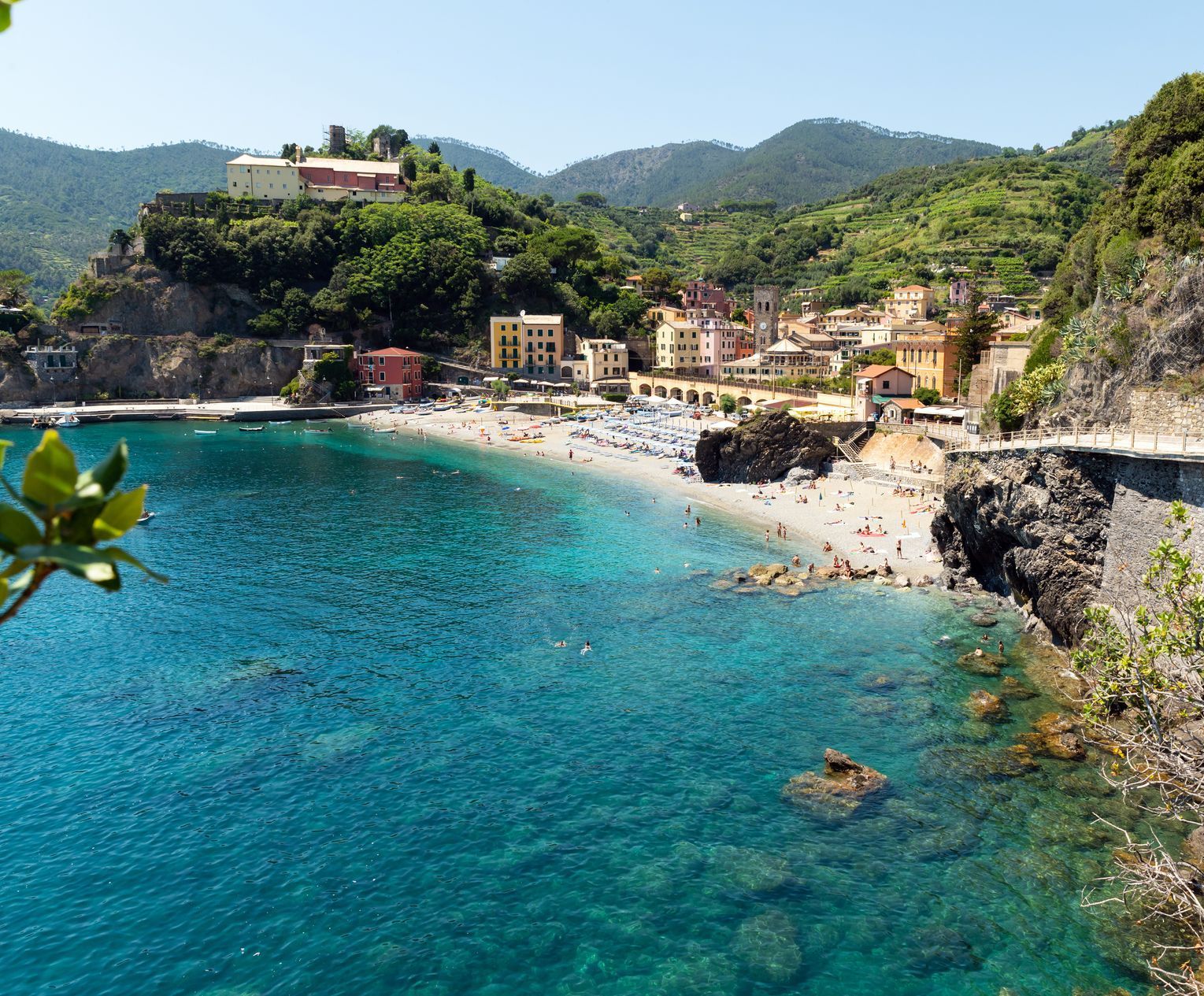
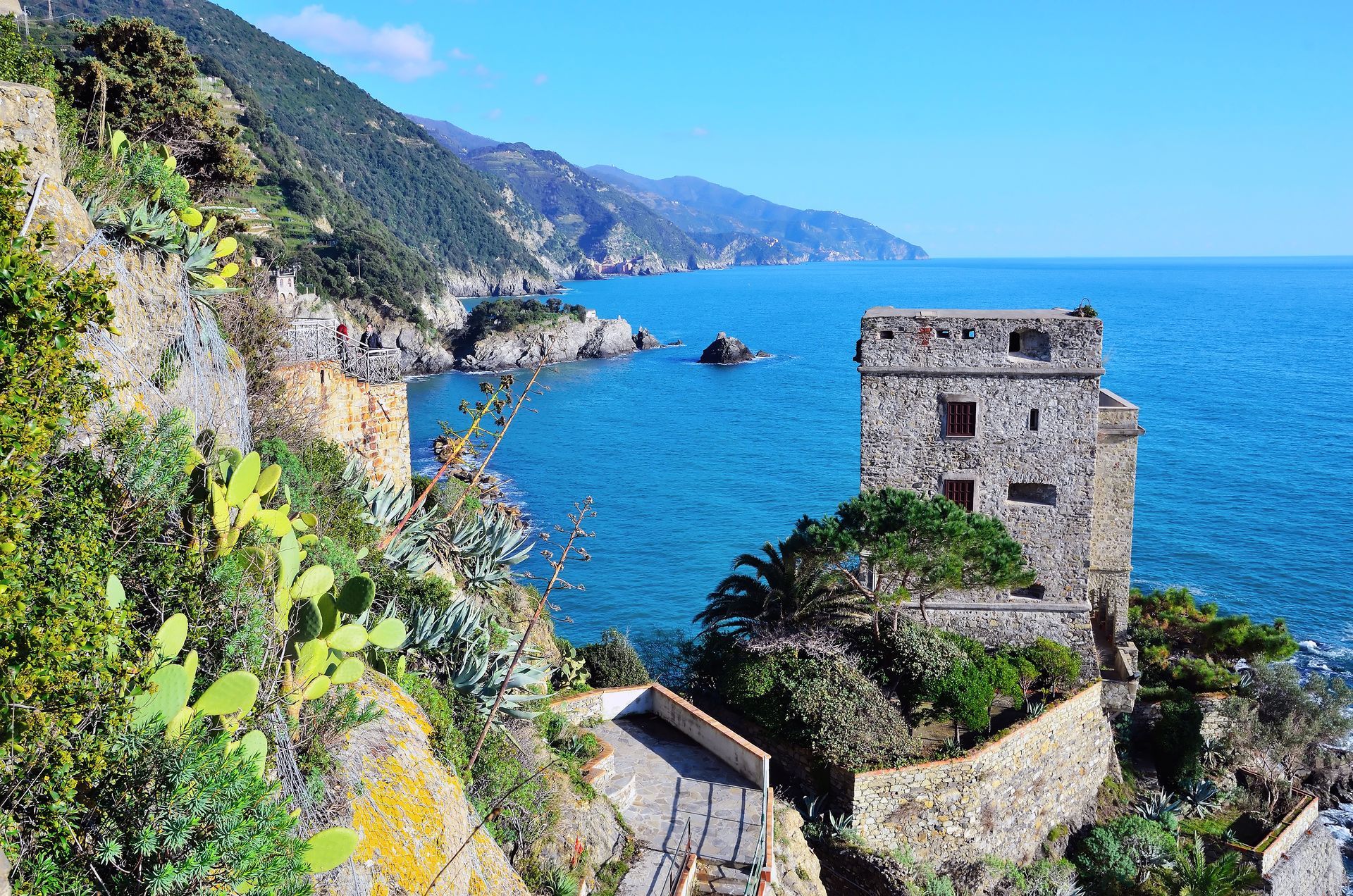
The castle
The ruins of the castle are located on the top of the mountain overlooking the town at the end of via Buranco, the oldest road in Monterosso. It was built by the Obertenghi family, the feudal Lombards who ruled over all of the Cinque Terre.
The castle was built to defend the village from the Saracens and was, over the centuries, remodeled by the Dorias, the Fieschis and the Saporitis, all Genoese ruling families.
Today very little remains of the original structure, only the tombs of the ancestors built inside the ramparts or underground and these are the sentinels of the burial ground protected by the apse of the church of San Cristoforo which serves as the chapel of the cemetery.
The Capuchin Convent
The convent of the Capuchin friars seems to watch over the peace of the town with protection. The shaded courtyard overlooks the Cinque Terre coast and the crystal clear sea is visible in all its beauty. The convent was built in the 15th century, under the castle on the hill dedicated to San Cristoforo, on the demarcation that separates the medieval village from the modern village of Fegina. To go up to the convent you have to use a stairway which is located in front of the Torre Aurora.
Inside the chapel of the convent, dedicated to San Francesco, the various wooden altars are worthy of note as well as a painting of the crucifixion attributed to the Flemish painter Anthony Van Dyck (1599-1641), a guest of the Spinola family in Genoa for several years .
The sea
According to some, the unique beauty of the Cinque Terre with its colorful villages is tinged with a small flaw; its beaches. In reality, there are only a few of them and it is not easy to find a suitable place to swim. This, of course, is not true for Monterosso. The beaches here are beautiful, in fact in 2007 the periodical "Forbes" added them to its list of the 25 sexiest beaches in the world. The beaches are easily accessible especially if you arrive by train, in fact Fegina beach is right across the road from the train station, and extends to the left and right.
The esplanade starts at the "giant" of Punta Mesco, on the western side of Monterosso and offers a magnificent view of the sea as it collides with the many cliffs and rocky cliffs. A perfect place to rest is in front of the Eden Bar, built on stilts in 1920. At the end of the promenade a tunnel will lead you to the older medieval village, which can also be reached by a higher path above the cliffs. The second beach, equally beautiful, it is located on the other side of the promontory, closed by the small port and the railway viaduct.
The esplanade ends where the famous path to Manarola begins. This is called the "Sentiero Azzurro" or Blue Trail. This will then become the "Via dell'Amore" or the "path of love" as it continues from Manarola towards Riomaggiore. If you decide to walk this path, be prepared for a memorable experience.

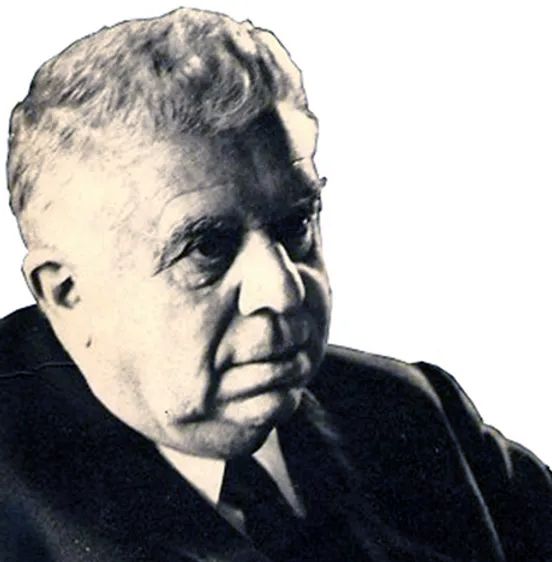
Eugene Montale
The title "The Gulf of Poets" was not given to this area by chance. Several famous poets and writers have enjoyed their holidays here; Byron and Shelley among them. In recent years, the Italian Nobel laureate, Eugenio Montale has spent most of his childhood, and later most of his summer holidays in Monterosso ...... "Here by miracle the fatigue of frustrated passions subsides, here we too , the poorest, we find a fortune and it is the scent of lemons....." (translation by Millicent Bell). From the poem, "The lemons", 1921. This is how Eugenio Montale, through his poetry, tells the beauty of Monterosso and how the Cinque Terre should be discovered. Here his parents owned an Art Nouveau villa, a house that Montale called "the ocher pagoda" or the "villa with two palm trees". Unfortunately this villa cannot be visited today as it is privately owned, but, alternatively, one could visit the "Literary Park" dedicated to the poet. Official guides will lead you through the terraces that descend into the sea and the atmosphere that inspired its poetry. During these visits, poems taken from his volume "Ossi di Cuttlefish" will be read.
The cemetery of the medieval village, where the tomb of the Montale family is located, is worth a visit as he often speaks of it in his poems. Regarding his relationship with the Cinque Terre, Montale admitted that "the period in Monterosso was a really formative season, but it also kickstarted my introversion and led to a captivity of the universe."
Festival
23/24 June - Feast in honor of San Giovanni BattistaVery spectacular is the bonfire held on the evening of the 23rd on the beach near the historic center of the town. On the 24th the celebrations continue with a procession of local religious brotherhoods and, particularly memorable, is the liberation of candles lit at sea.
Third weekend of May – Lemon Festival The whole population of Monterosso is involved and every corner is decorated with this beautiful and aromatic fruit. During the festival it is possible to visit a local lemon grove.
Third Weekend of June – Anchovy FestivalMonterosso, and all the other villages are famous for the anchovies caught in the local ocean and for the way they are cooked and preserved. This holiday is celebrated with food stands offering anchovies and all kinds of local products. At night the party ends with boat trips where you can admire the fishing activities of the torch.
Third week of September – Preserved Anchovy FestivalMonterosso is famous above all for its anchovies, once preserved exclusively in sea salt. Throughout the village visitors are offered samples of this traditional fish while sipping the local white wine.
